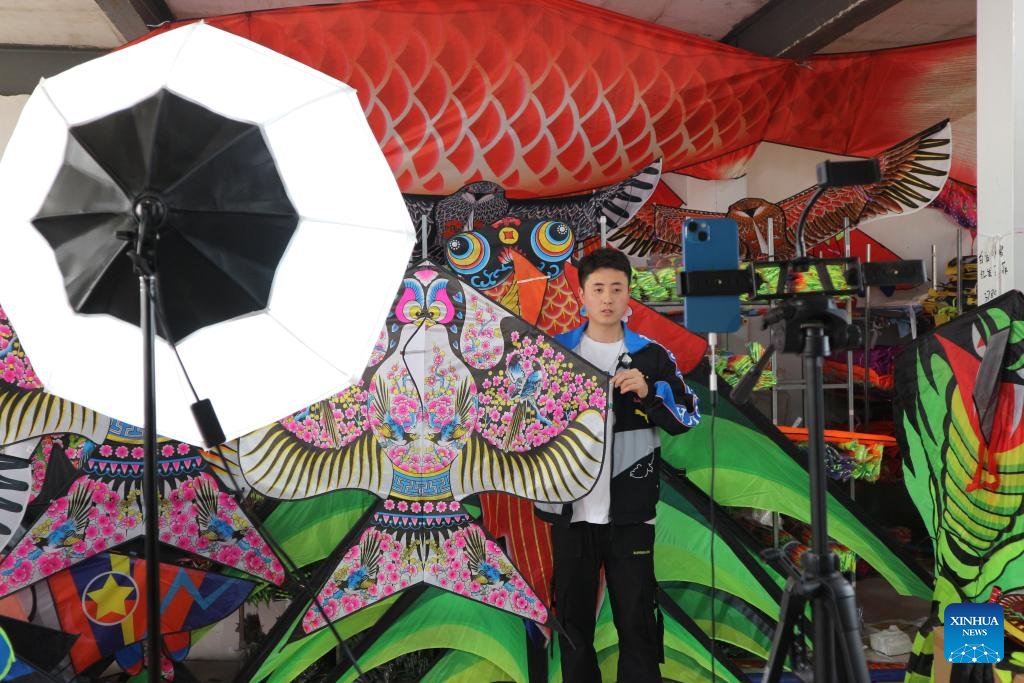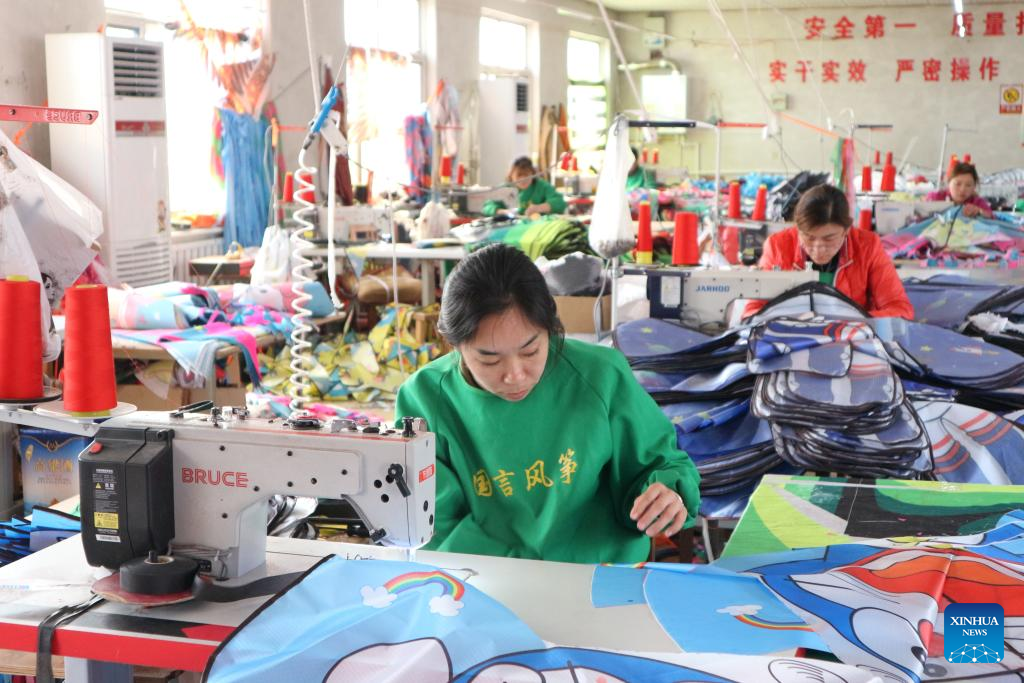
Zhang Yuhang promotes local kites via livestreams in Wangjiazhuangzi Village in Fangzi District of Weifang, east China's Shandong Province, Dec. 19, 2023. (Xinhua/Wang Zhi)
JINAN, Dec. 27 (Xinhua) -- Despite the bitter cold outside, the workshop of a kite factory in the city of Weifang in east China's Shandong Province is bustling, with workers at full throttle to fulfill orders.
"Our clients are distributed across more than 10 provinces. We have sold 2 million kites this year, with our sales revenue increasing to over 6 million yuan (about 845,487 U.S. dollars), up 10 percent compared to the same period last year," said Wang Licai, manager of the Sanli kite factory.
Currently, more than 30 workers are involved in making colorful kites at this factory, with designs including butterflies, swallows and centipedes, while these workers also package the products.
The kite culture and thriving kite industry in Weifang have a long and rich history. The city has over 600 kite enterprises, with more than 80,000 employees and an annual output value of over 2 billion yuan.
Wangjiazhuangzi Village, where the Sanli company is located, stands out as the leading village in Weifang's kite industry, due to its excellent craftsmanship and diverse designs.
"Our village features over 200 kite enterprises. More than 2,300 villagers, about half of the entire population, are engaged in the industry," said Wang Zhenhua, a village official.
"Making kites is our specialty. I've been working in the factory for 20 years, and on average, I can produce 300 kites per day, earning a monthly salary of 4,000 yuan," said 52-year-old villager Wang Fengling.
Apart from passing on traditional manufacturing skills, enterprises in the village have also injected new vitality into kites.
"We have integrated modern technologies such as sound and light into the traditional bamboo-framed kites, as well as produced 3D kites, making the kite industry in Wangjiazhuangzi Village more dynamic," said Wang Tieyuan, a secretary of the local kite industry association.
In recent years, the village has seen enterprises using environmentally friendly materials to make kites and upgrading production lines, while also improving efficiency.
In addition, kite enterprises have jumped on the e-commerce bandwagon. "About 80 percent of kite factories in the village have established online shops. Sales revenue from e-commerce livestreaming in 2023 has reached nearly 100 million yuan," Wang Zhenhua said.
The thriving kite industry has also attracted young people back to their hometown, a further boost for rural revitalization in this region.
Zhang Yuhang returned the village in 2022 and is now engaged in kite e-commerce.
"I have sold local kites to customers across the world through livestreaming. Witnessing the kites from my hometown flying high and far, I feel quite fulfilled," said Zhang.
Thus far, kites from Wangjiazhuangzi Village have been exported to more than 50 countries and regions, including Europe, the United States, and Southeast Asian countries. The annual sales volume of kites in the village has reached nearly 100 million, with an annual output value exceeding 500 million yuan.
This year, the per capita annual income of villagers is around 35,000 yuan.

Workers make kites at the workshop of a kite factory in Wangjiazhuangzi Village in Fangzi District of Weifang, east China's Shandong Province, Dec. 19, 2023. (Xinhua/Wang Zhi)

Workers pack kites at the Sanli kite factory in Wangjiazhuangzi Village in Fangzi District of Weifang, east China's Shandong Province, Dec. 19, 2023. (Xinhua/Wang Zhi)




 A single purchase
A single purchase









